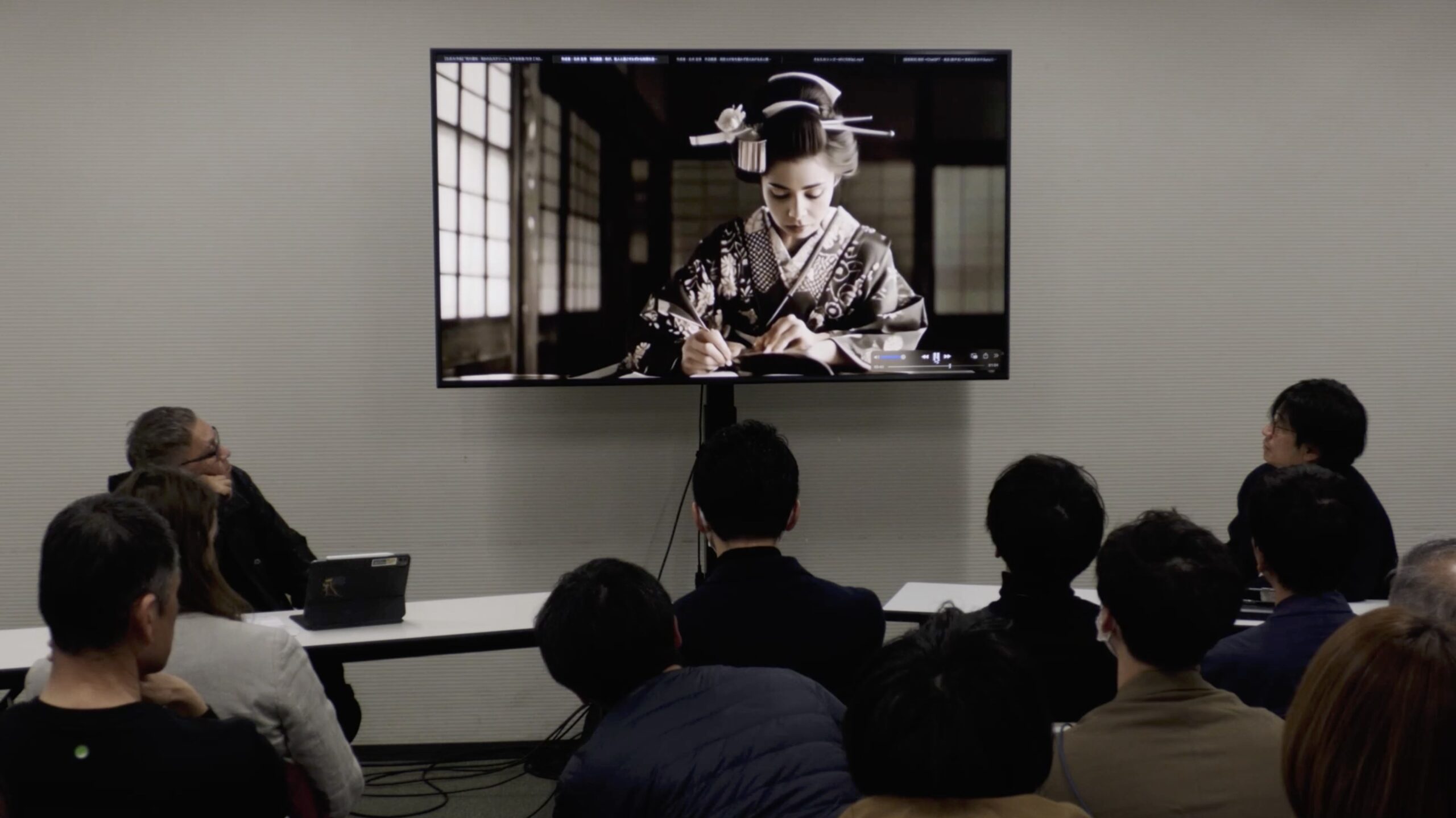
AI-Movie.report

AI-Movie.report
The kickoff event for “Creating the Best Movies with AI” began with a greeting from Shin’ya Saka, the Director General of the initiative and Representative Director of AI-Acts Inc., saying, “Thank you for being here today.” This initiative aims to use AI as “a member of the staff” to create “the best movie for oneself.”
The founder, director Takashi Miike, explained the reason for launching this group: “I did not gather everyone here just so they could work under my direction. Instead, I want to support the realization of what everyone wants to create, in the way they want to create it, and hopefully, it could lead to job opportunities.”
AI technology, especially the recent “generative AI” boom, poses challenges that the film industry must keep up with. For example, actors in Hollywood films have raised concerns about their rights, such as image rights, as challenges arising with the proliferation of generative AI. While acknowledging the need to resolve these rights and legal issues in professional settings, Director Miike also expressed a conflict, stating, “Should we, for our own work’s sake, stifle the budding potential, like an elementary school student creating a film for their grandmother using generative AI?”
Director Miike shared his vision for the initiative: “I want to create an environment where craftsmen and ordinary people can elevate each other.”

At the kickoff event, digital content producer Masayoshi Obata shared how generative AI is being used in the field. Initially, generative AI had low accuracy, and when generating human faces, it couldn’t produce the same face twice. The approach began by creating human body parts like heads and arms in CG, teaching these variations to the AI. Through repeated processes, the AI learned to replicate the same face in 8 out of 10 attempts.
Obata then focused on applying this technology in the fast-paced fashion industry, teaching the AI to remember various clothing styles. Initially, the AI was taught with flat, shadowless images, progressing to learning the nuances of wrinkles, shadows, and textures. This progression allowed the creation of images that not only conveyed texture and weight but also featured atmospherically rich backgrounds and lighting.
Obata remarked, “Even I, who had never done anything like designing clothes, was able to create multiple variations with just a few prompts.” He laughed about the recent launch of ‘Sora,’ a video-specific generative AI by OpenAI, joking, “What were those two years all about?” This highlighted the rapid advancements in AI capabilities and their transformative impact on creative fields.
OpenAI’s “Sora” can generate highly realistic videos that appear as if they were actually filmed. With such services being launched, one wonders how generative AI will evolve in the next two to three years. Mr. Obata mentioned that generative AI will continue to evolve, becoming freely usable by the general public, and a variety of people will have it perform a variety of tasks. It learns easier when tasked with diverse activities rather than repetitive ones. As its applications diversify, AI’s evolution will accelerate.
However, he also discussed the possibility that the spread of advanced AI could be slowed by infrastructure limitations such as processors needed to handle large amounts of data. For example, only two companies manufacture the GPUs necessary for generating images and videos. There are challenges related to how much these two companies can supply to server companies.
Moreover, not just the infrastructure, but the vast amount of electricity required to power it is also a concern. There was a time when the power consumption of servers for Bitcoin mining was rumored to be problematic. As AI becomes more widespread, it will use many times more processors than mining, requiring a correspondingly large amount of electricity. While this is a different discussion from creativity or engineering, it also impacts the spread of AI.
Despite these challenges, Mr. Obata stated that “the pace of progress is 10 to 20 times faster than any video advancements we’ve seen before.”
In response, Director Miike anticipates that as the infrastructure improves, AI’s “inference” capabilities will increase, enabling it to understand and generate based on user intentions, and even simplify communications that previously only experts could manage, making it accessible to everyone.
In fact, generative AI that does not require prompts already exists. Selecting options alone can automatically generate highly realistic scenes. Mr. Obata suggested that in the future, even toddlers who can only speak a few words could create a cinematic world of their doll play.
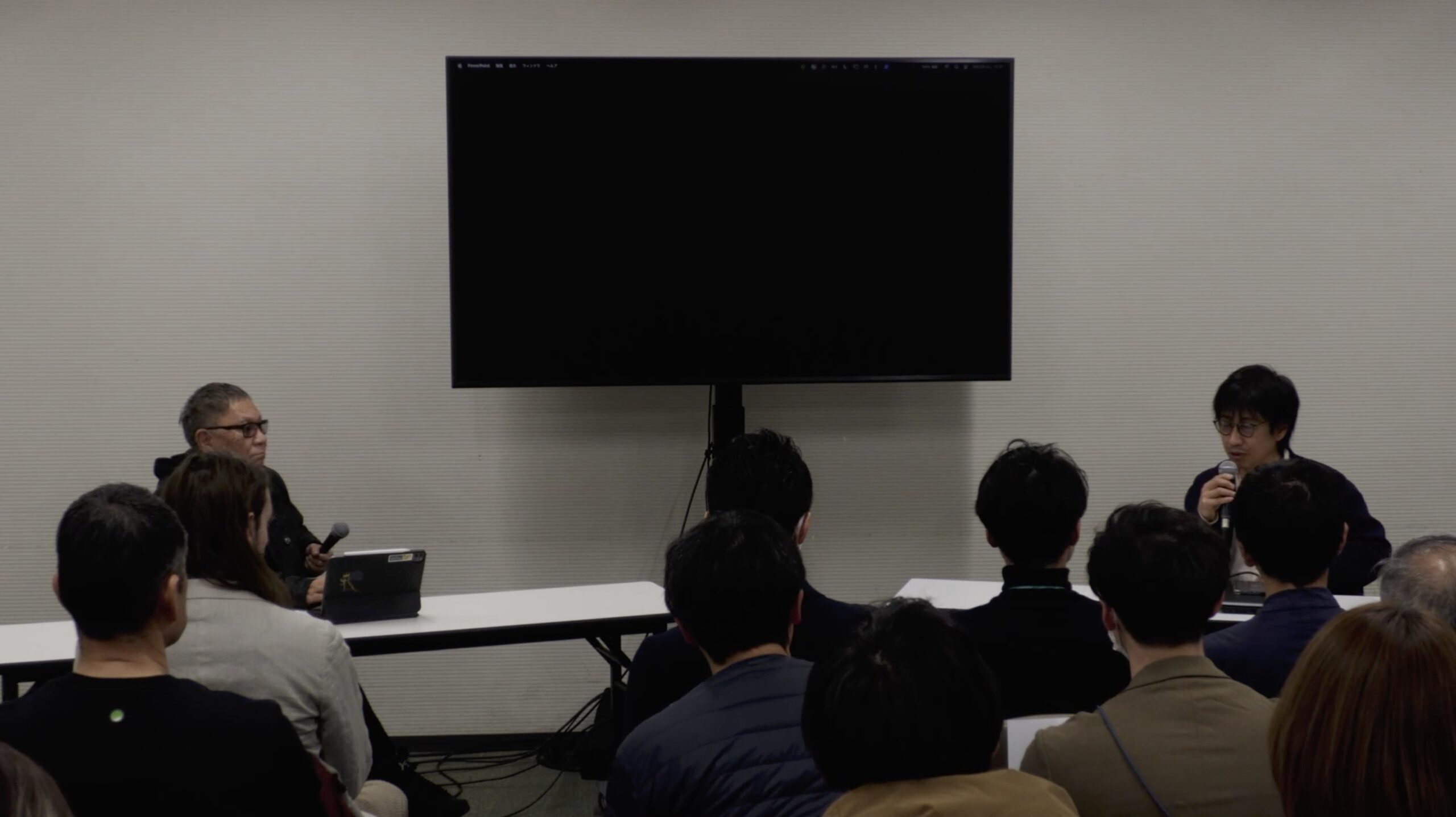
With the widespread adoption of generative AI, many people will be able to easily make movies in the future. Director Miike hopes that “even someone bedridden could create films,” yet he also harbors doubts about whether such creations will indeed possess value or appeal.
Mr. Obata addressed this concern, stating, “Using AI for ‘production for the sake of eating’ frees up energy for ‘creating what one truly wants to create.’ Professionals have easier access to studios and famous actors. If communication incorporates AI, it may continue to ensure quality productions.” Professionals have numerous connections to expressive techniques, shooting studios, and talent agencies. While the general public used to view films only as ‘audiences,’ they might soon be able to see them from a ‘creator’s’ perspective. Advice from AI might lower the barriers between professionals and amateurs, though professionals still hold an advantage.
When the barriers disappear and the definitions of professionals and amateurs blur, Director Miike anticipates that “we may see amazing works with incredible worldviews emerge.”

The first piece is by “Toshimaru-san.” It resembles a horror movie trailer, featuring a story where receiving a certain notification on a smartphone leads to death seven days later. The main feature skillfully incorporates various color tones and effects, and the atmosphere is enhanced by the background music and sound effects. Characters and backgrounds generated by AI appear three-dimensional through effects like blurring, camera work, and lighting.
After viewing this work, Director Miike commented that “scenes of destruction” are something CG excels at, and mentioned, “The fear induced by the AI-generated characters may also be related.” Toshimaru-san was inspired by Miike’s film “One Missed Call” for this work. “One Missed Call” was known for its ringtone from an old flip phone. Toshimaru-san wondered what kind of story could be created in today’s era of smartphones, leading to the production of this work.
The concept was Toshimaru-san’s idea, but the script was drafted using ChatGPT, and the materials were generated by image, video, and music AI, followed by editing. The production took about 40 minutes, and the audience was impressed, expressing admiration.
Director Miike joked about the rapid production, “It took 40 minutes? We spend 2-3 days shooting, 2-3 months on CG, a month on sound, half a year on promotion, and then release—all in 40 minutes? Amazing!” while eliciting laughter from the audience.

The second and third pieces are both works by Mr. Shirai. The first piece viewed was titled “A Moment of Samurai,” reminiscent of a sepia or monochrome photograph taken from the late Edo to the Meiji period. However, this was not a static slideshow of images; the characters moved slowly, and the video included dynamic camera work. One scene focused on a woman’s hair ornament, where the shading was natural, and the details were not crushed. The difference in the weight of the kimono on sunny days compared to rainy days and the natural movement of trees in the wind were also effectively depicted. The distinct facial features of Japanese people were accurately represented.
The next piece viewed was “The Proud Firefighter,” featuring a firefighter at work at an overseas fire scene. The flames’ eruption and fluctuation were natural, and the reflection of light on puddles formed by firefighting efforts was incredibly realistic. Interestingly, even water droplets on the lens, as if actually filmed with a camera, were depicted.
Mr. Obata commented on the traditional filming methods, saying, “It would take months to recreate this with CG. One might think it’s better to film it in reality, but just preparing many fire trucks would be very costly.” He continued, “Being able to express one’s thoughts with this quality narrows the gap between amateurs and professionals, elevating amateur filmmakers.”
Mr. Shirai shared the challenges of creating the piece, “Samurai was very tough. It’s difficult to cleanly represent Japanese faces with generative AI, so it took about a whole day just to create the base images.” Yet, even with these challenges, the production time was considerably short.
“Using generative AI, the word ‘Kyoto’ easily brought about a Japanese ambiance, so I kept the word ‘Kyoto’ unchanged and changed other words, like ‘moon’ or ‘bridge,’ while adding scenery to the prompts,” explained Mr. Shirai about his creative process. Hearing this, Director Miike commented, “It’s currently challenging to create long works featuring the same actor performing, but movies made with generative AI that utilize these characteristics might emerge.”

The fourth entry is a work by Sonechi titled “AI Singer MV.” The content is a music video featuring a character singing a song with accompanying visuals. The shading and mass of the objects appearing in the work are very realistic, and the characters also appear very natural. From a distance, I watched the work and could not discern any difference from current works shot using CG or physical sets; there was no sense of discomfort.
Sonechi was not present at the venue on the day, but Mr. Obata speculated, “The lip sync might have been created using a generative AI tool called deepfake, which swaps the faces of the characters initially created.”
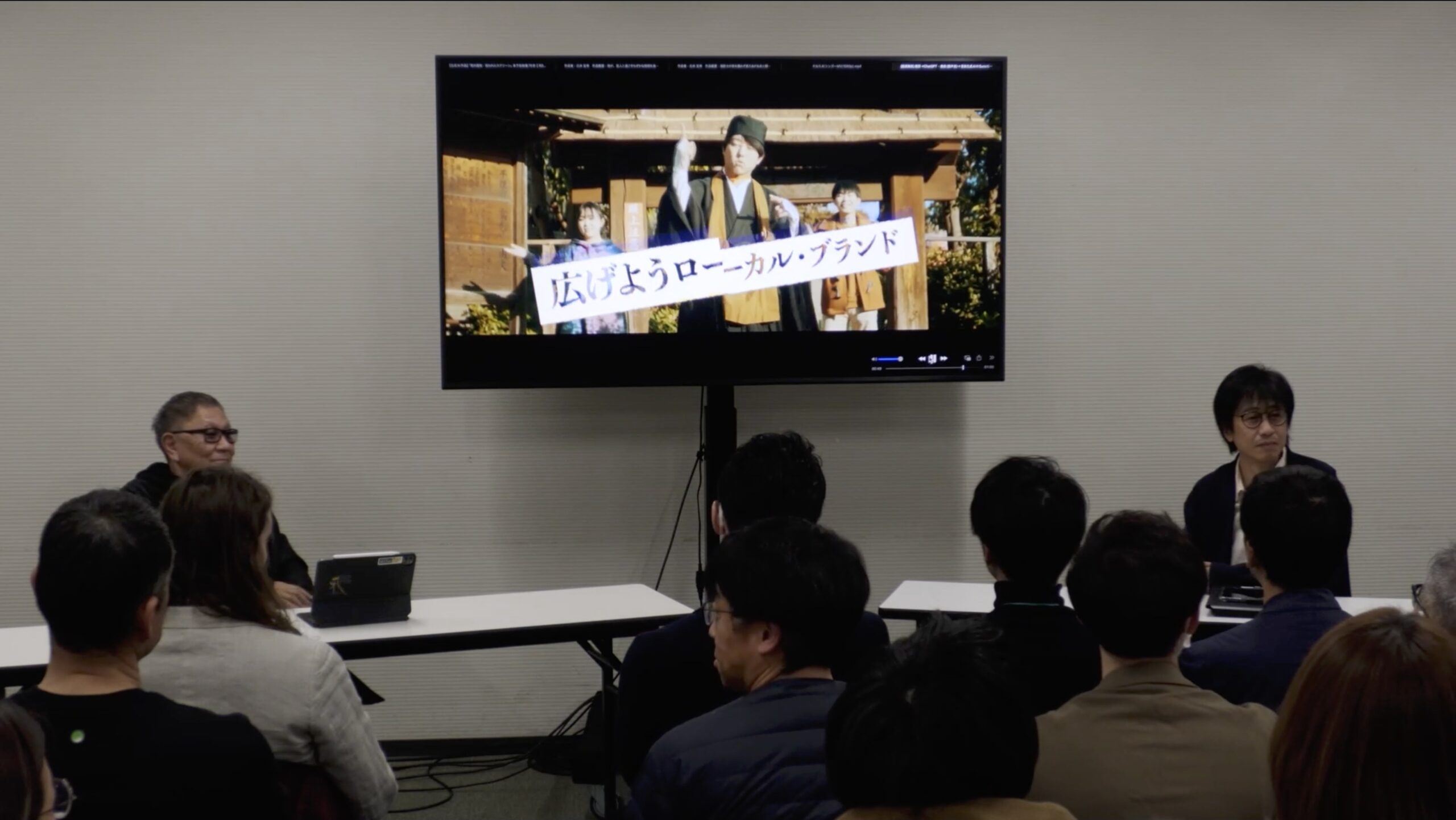
The fifth entry is a unique work titled “Adachi Ward, Tokyo PV” by Hattori-san. Generative AI was responsible for the music, lyrics, and vocals, while the visuals primarily consisted of actual footage.
Director Miike asked, “How was it working with AI as a collaborator on the project?” To which Hattori-san replied, “I’m currently experimenting with scriptwriting for dramas, exploring how to create authentic expressions in drama, and it’s very enjoyable.” Hattori-san is involved in video production and is eager to enhance his literacy by taking on various challenges.
Director Miike noted, “It happened to be Adachi Ward through Hattori-san’s connections, but it’s possible to create similar projects in other municipalities. We might be able to undertake projects like this one entirely,” while discussing other possible variations, using “Yuru-chara” (mascots) as an example.
Furthermore, Director Miike discussed the potential of filmmaking with AI, stating, “It takes about three years from conceptualizing a movie to showing it to the audience. With AI-made films, it’s possible to create something that’s currently trendy.”
During the Q&A session, a man in the audience shared his views on what makes the best movie for him: “For me, the best film is ‘something interesting,’ and no matter how impressive the CG, if the story isn’t interesting, it’s just a visual piece. I believe that human touch will still be necessary in aspects like lighting, cuts, pacing, and storytelling in future film production.” He then asked, “Could even the parts that directly affect our emotions, like what we find to be an interesting story or pacing, be replaced by AI?”
Director Miike responded, “Essentially, I think it’s like having a really knowledgeable film buff who stimulates you. Those involved in filmmaking shouldn’t take things at face value, and need to have their own input. I see AI as a good partner,” he answered with a smile.
Another person asked, “As high school students in a society where AI enables us to create anything, what should we learn?”
Director Miike advised, “First, enjoy. If there’s enjoyment, you’ll naturally want to learn. If you love movies, you’ll naturally want to make them,” again answering with humor.
At the end of the event, Director Miike said, “In creating the best movies with AI, we are thinking about fitting each role and action to various projects. There might be issues with time, but first, let’s create, let’s release, and let’s pave the way forward. I believe things we haven’t even thought of will start happening. I hope we can enjoy these changes together.”
The advancement of technology related to AI is rapid; what couldn’t be done yesterday might become possible today. As Director Miike mentioned, the day when AI understands human emotions may not be far off. Yet, your film remains your own direction, and AI is there to support you as a valuable partner. I hope you can think about the film together and enjoy creating the best movie for you.
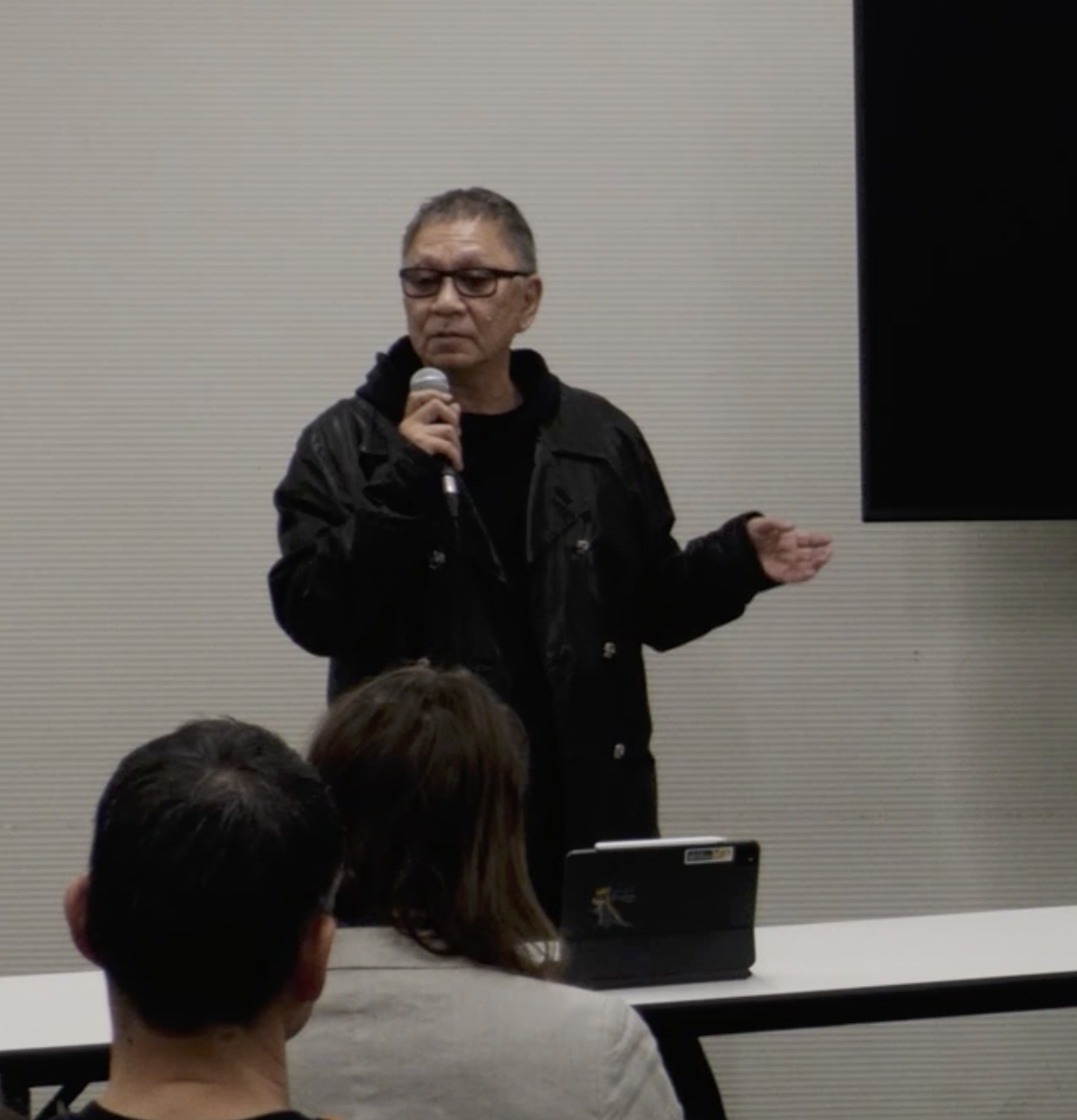
Film director
Born in 1960 in Osaka Prefecture, this film director has directed over 130 films to date.
He has produced numerous hits domestically, while also receiving high acclaim internationally.
His films “Ichimei” and “Wara no Tate” were selected for the Cannes International Film Festival, and “13 Assassins” was chosen for the Venice International Film Festival. He is also a member of the Academy of Motion Picture Arts and Sciences in the United States.
His notable works include “Audition,” “DEAD OR ALIVE,” “One Missed Call,” “Crows ZERO,” and “Mogura no Uta.”
Recently, he has also worked on animation projects like “Onimusha” on Netflix and a co-production with Korea called “Connect” on Disney+.
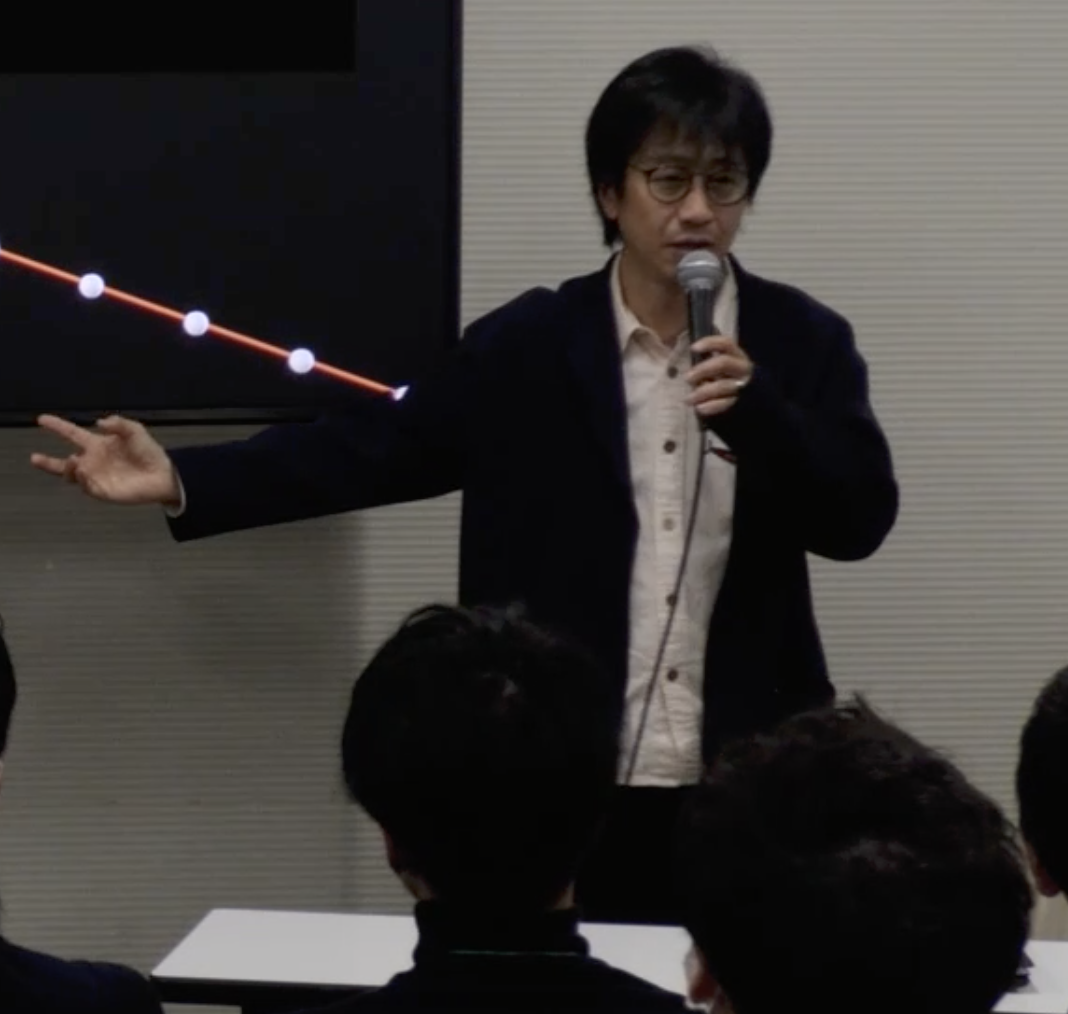
Digital content producer
From the early days of CG, he worked at NHK Enterprises, handling CG production for historical dramas and other projects. He served as the VFX director for early works by Miike for many years and has also held teaching positions, including as a professor at Waseda University. Currently, he incorporates generative AI and XR, advancing the planning and production of 3D digital data across entertainment and industrial sectors.